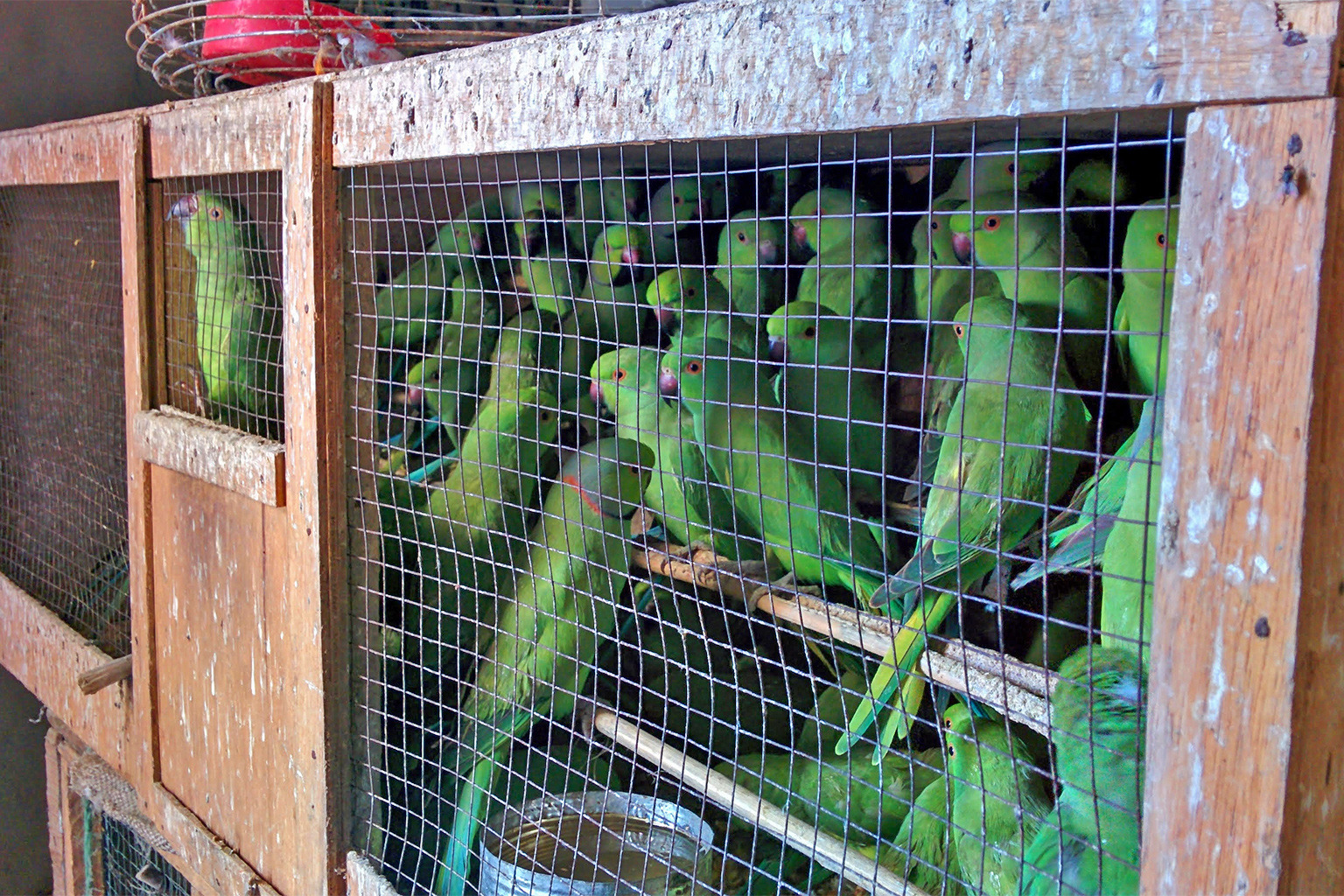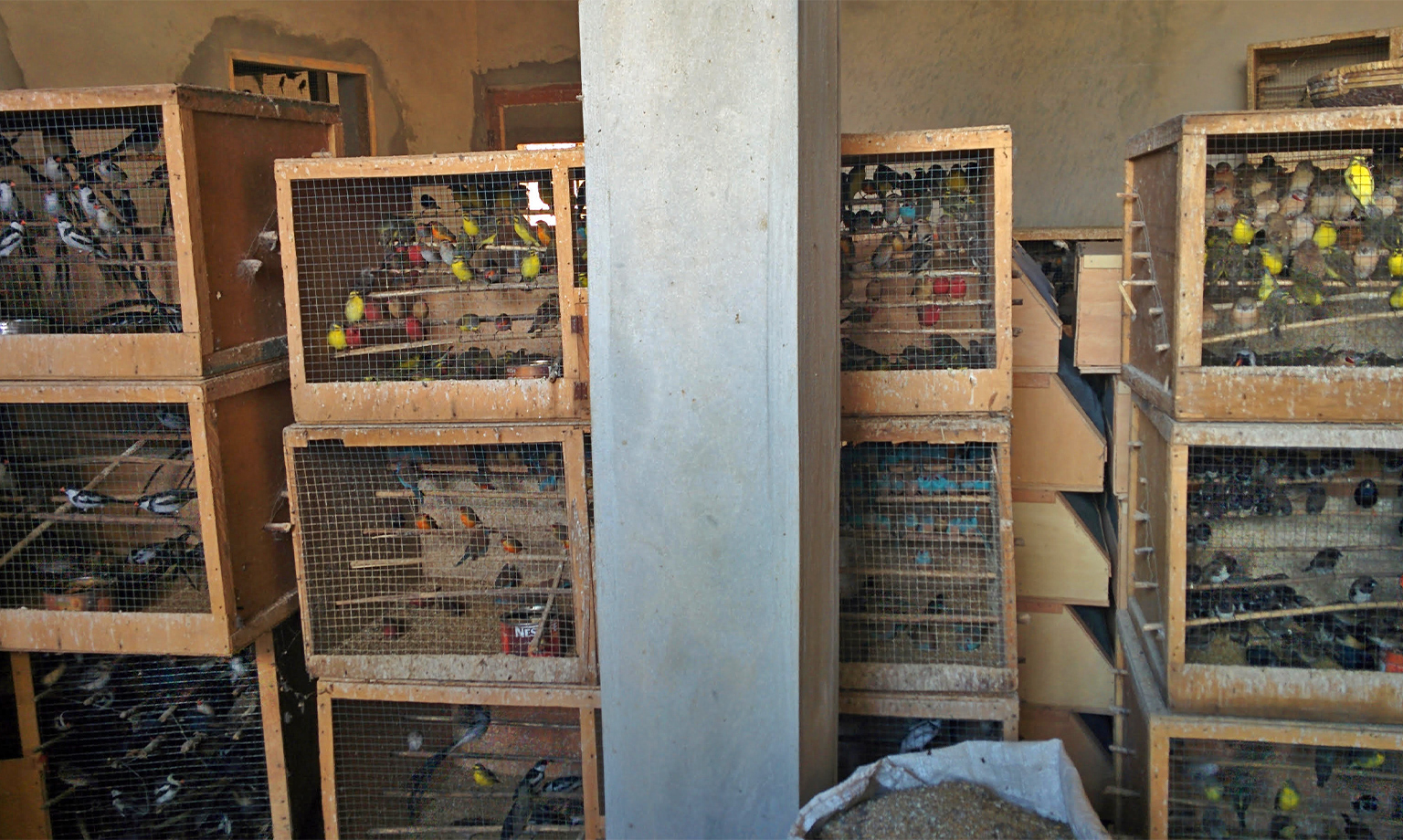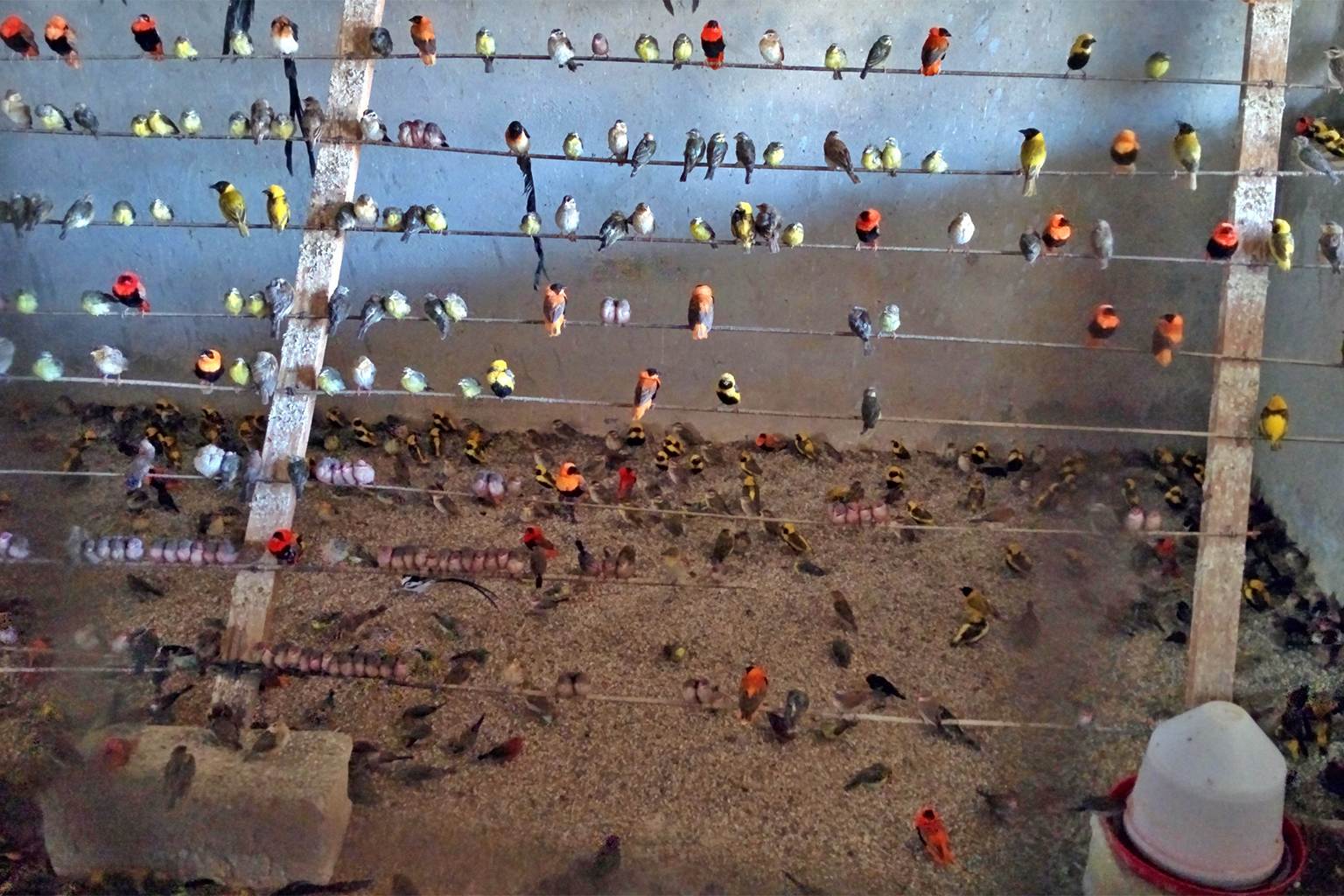- Researchers conducted a study on the online trade of West African wild birds in an effort to fill knowledge gaps about the trafficking of species from this part of the world.
- The study found that 83 species of wild birds from West Africa were being traded online, including three species protected under the highly prohibitive CITES Appendix I, and that many potential buyers originated from South Asia and the Middle East.
- In general, very little is known about wild birds in West Africa, so it’s difficult to assess whether the trade in certain species is sustainable, the researchers say.
- The authors have also raised concerns about the spread of disease upon viewing images of multiple species of birds confined together in small enclosures.
With its bright green plumage and range of vocalizations, the rose-ringed parakeet is one of the most sought-after birds in the pet trade. To supply ongoing demand for these birds, traders capture them from their native ranges in parts of Africa and Asia, then sell them to buyers across the world.
The rose-ringed parakeet (Psittacula krameri) has been so widely trafficked that, in 1976, countries moved to list the species on Appendix III of CITES, the global wildlife trade convention, in an effort to monitor and regulate the trade. But in 2007, CITES delisted the rose-ringed parakeet, along with 115 other wild bird species found in West Africa, possibly in response to the European Union banning the import of wild-caught birds in 2005, experts say. While the EU ban did reduce some trade, experts say that sales are picking up in the Middle East and South Asia, and that the lack of CITES regulations has made it very difficult to monitor the trade, particularly when it comes to birds originating from West Africa.
“We know that the unsustainable trade in wild birds from the region has caused populations of some species to collapse but for most species there is essentially no monitoring of populations in the wild,” Rowan Martin, a wild bird expert who holds positions at both the Centre of Excellence at the FitzPatrick Institute of African Ornithology and the World Parrot Trust, told Mongabay in an email. “We simply don’t know if the trade in these species is remotely sustainable and there is no requirement under the CITES convention to monitor wild populations or even report on the quantities being exported.”

‘Cause for greater scrutiny’
A new study published in Bird Conservation International, co-authored by Martin and researchers from the University of Exeter, NOVA University Lisbon, WildCRU at the University of Oxford and the Oxford Martin Program on Wildlife Trade, sheds fresh light on the trade of West African wild birds. By analyzing 427 posts on a “popular social media platform,” the researchers found that 83 species of West African birds from 26 avian families were being traded online, and that much of the trade-related engagement came from buyers based in South Asia and the Middle East.
“We were surprised to see countries in south Asia feature so prominently in levels of engagement with West African dealers,” Martin wrote. He added that these findings prompted him and his colleagues to launch a recent investigation with the BBC, which led them to discover how “importers subvert systems for the legal bird trade to import endangered and protected species” such as African gray parrots (Psittacus erithacus).
Lead author Alisa Davies of the World Parrot Trust and University of Exeter says that the social media posts also raise concerns about the spread of disease, since images showed different species of birds in close confinement.
“There’s cause for greater scrutiny,” Davies told Mongabay. “We’re concerned there are some species which are appearing in quite high quantities, which might be slower breeders such as turacos … and we’re also concerned about the risk of infectious diseases given that a lot of the birds were kept quite densely packed, and multiple species were being kept in the same enclosures, which creates conditions where you could have disease crossover between different species.”
“Many countries around the world have recently put in place strict measures in response to outbreaks of high pathogenicity Avian Influenza and it beggars belief that elsewhere trade in wild birds is still occurring on this scale,” Martin said. “Do the economic benefits really outweigh the risks?”
The trade of wild birds also gives rise to animal welfare issues, and has enabled birds to become invasive species in other parts of the world, according to the study. For instance, the rose-ringed parakeet has now established new populations in 35 countries across Europe, North America, the Middle East and Southern Africa, the study says.

‘The story is not good’
The researchers didn’t identify the social media platform used in their study, but it’s well established that wild birds and other animals are regularly traded on platforms such as Facebook, Instagram, TikTok and Whatsapp.
The study found that the most common species being traded online were rose-ringed parakeets, Senegal parrots (Poicephalus senegalus) and yellow-fronted canaries (Crithagra mozambica). However, the researchers also identified nine species listed under CITES, including three protected under the highly restrictive CITES Appendix I, which prohibits nearly all trade. The species protected under CITES Appendix I included the African gray parrot and the Timneh parrot (Psittacus timneh), both of which are considered to be endangered on the IUCN Red List, and the black-crowned crane (Balearica pavonina), which is classified as vulnerable.
Davies said that while the trade in endangered species like African gray parrots would be illegal, most of the other trade activities analyzed in the study would be legal. However, the lack of data on wild birds in West Africa makes it difficult to determine whether the trade in a species is sustainable, the researchers said.
“Very little ornithological research takes place in West Africa but where data does exist, the story is not good,” Martin said. “For example populations of Timneh and African Grey parrots have collapsed leading to their listing as globally Endangered on the IUCN Red List of threatened species. The range of Goldfinches, a small and common songbird, has declined by 57% in just 26 years. Several of the species that appear to be traded in significant numbers are large bodied forest species such as hornbills and turacos which are slow to reproduce. They are unlikely to be able to withstand high rates of off-take, especially given the other threats they face from hunting for bushmeat and forest loss.”

Simon Brusland, a bird expert at the Silent Forest Group and member of the IUCN SSC Red List Authority for Birds, who was not involved in this study, called the researchers’ efforts to provide insight into the wild bird trade in West Africa “impressive and inspiring.”
“[I]n the past we have only seen the birds as they arrive at their destinations with new consumer markets around the world and in particularly in Asia,” Brusland told Mongabay in an email, “but we still have comparatively little understanding on the dynamics of the birds leaving West Africa. Obviously the numbers are cause for concern, but was not a big surprise.”
Brusland said other studies have shown that the online trade in individual birds can reach “intolerable numbers” and that a large portion of a population can be impacted by these trading activities.
“In the case of West Africa international trade in high volume [has] been going on for decades and we really have nearly no details how it is affecting wild bird populations but it is very hard to imagine it to be sustainable,” he wrote. “I certainly think we need more details on how the trade affects local populations and more full species assessments across countries is badly needed. I fear that such assessments would put many species in a new light and perhaps another Red List category.”

Addressing the trade
Martin said regulators should do more to “encourage and coerce platforms to take meaningful action” to address the trade of wild species online.
“Although many platforms have strong community standards, these are often not systematically or proactively enforced,” he added.
Davies said there should also be “careful consideration” of whether certain species should be relisted to CITES Appendix III.
“If there’s evidence based on this volume of trade, and based on other information, then it might be a good idea for them to be relisted on Appendix III so that we can understand what’s going on,” she said.
While the trade of wild birds from West Africa is an ongoing issue, Martin said he’s been encouraged to see a decline in public trade activity following the uplisting of African gray parrots and Timneh parrots to CITES Appendix I.
“Whether trade in wild birds continues,” Martin said, “will depend on how countries, platforms and regulators respond to the challenge.”
Banner image: The study found that 83 species of wild birds from West Africa were being traded online. Image courtesy of World Parrot Trust.
Citations:
Davies, A., Nuno, A., Hinsley, A., & Martin, R. O. (2022). Live wild bird exports from West Africa: Insights into recent trade from monitoring social media. Bird Conservation International, 1-14. doi:10.1017/s0959270921000551
Davies, A., D’Cruze, N., Senni, C., & Martin, R. O. (2022). Inferring patterns of wildlife trade through monitoring social media: Shifting dynamics of trade in wild-sourced African grey parrots following major regulatory changes. Global Ecology and Conservation, 33, e01964. doi:10.1016/j.gecco.2021.e01964
Correction (23/06/2022): A previous version of this article attributed the decline of trade in African gray parrots and Timneh parrots directly to their uplisting to CITES Appendix I, but this statement has been revised to say that public trade activity was seen to decline after the CITES uplisting.
Elizabeth Claire Alberts is a staff writer for Mongabay. Follow her on Twitter @ECAlberts.
FEEDBACK: Use this form to send a message to the author of this post. If you want to post a public comment, you can do that at the bottom of the page.














